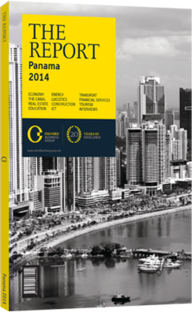An open framework: Weighing the economic impact of an open foreign policy and alluring business hub
The country’s geostrategic location has historically granted it an influence on a regional and global level that often surpasses its small stature. Since the turn of the millennium the country has been diversifying its contribution to regional and global business through the expansion of its status as an international finance, transportation and business centre. The current administration has prioritised encouraging regional integration, commerce and trade, while pursuing increased cooperation with larger regional trading blocs such as the recently formed Pacific Alliance.
Working Together
Indeed, while simultaneously signing a raft of free trade agreements (FTAs) the country has been openly courting multinational firms to set up regional headquarters in Panama by providing high-end infrastructure and incentives. Though this has sparked a debate over whether small and medium-sized industrial, agricultural and manufacturing firms, as well as lower-income groups, are positioned to benefit from such changes, done properly Panama will be well-served in the long term by increased regional and global integration. Over the course of the past decade Panama has signed FTAs with Costa Rica, Taiwan, Guatemala, Nicaragua, Canada, Chile, El Salvador, Honduras, Singapore and the US, while limited commercial accords have also been struck with Colombia, Mexico, Cuba, the Dominican Republic, Peru and Israel. Panama also concluded the signing of a trade agreement with another major market, the EU, in late 2012 as part of a block of five other Central American nations. In September 2013 trade relations with Colombia were further solidified with the signing of an FTA.
Signed accords awaiting approval or ongoing negotiations are also in place with Trinidad and Tobago, Korea, the four-member European Free Trade Association and the 15-member Caribbean Community. Panama is also a part of the eight-nation Central American Integration System, though only as it pertains to economic matters. Guatemala, El Salvador, Honduras and Nicaragua have already unified their visa regime, lifted border controls and harmonised passports, while Panama and Costa Rica are considering a similar accord.
Balancing Concerns
Some question whether Panamanian firms, particularly those in the industrial and agricultural sectors, are prepared to compete in the global marketplace. The experience of Mexico’s agricultural sector competing against a highly mechanised and subsidised agriculture industry in the US under the North American Free Trade Agreement framework shows how such agreements can negatively impact certain industries. According to figures from the World Bank, Panama has averaged a net trade deficit in goods and services of $758.3m from 2008 to 2012, roughly 2.1% of the country’s 2012 national GDP.
Aida Michelle U de Maduro, president of the Panama Industrial Association, told OBG, “Our consistently negative trade balance, comparatively high labour costs and lack of economies of scale mean we should be analysing all FTAs much more closely to identify the niches where we can benefit, as thus far we have not seen sufficient benefits to warrant some of them.”
Facilitating Trade
The country’s status as a major global trans-shipment point, which is about to experience a major boost thanks to the expansion of the canal, will most likely provide many opportunities to establish and expand its logistics hub. Law 41 (2007) established a special regime for attracting multinationals to headquarter regional operations in Panama.
Numerous firms have already taken advantage of Panama’s friendly business regulations, including Adidas, Caterpillar, Ralph Lauren and Procter & Gamble. However, thus far such companies have yet to establish major production or manufacturing facilities, and while their presence has created some employment it has also served to exacerbate a growing inflation problem.
Improving labour qualifications, while providing access to finance and technology for small and medium-sized firms, will be key to ensuring Panama is able to capitalise on its open approach. If it can successfully address these obstacles, the benefits should outweigh costs.
You have reached the limit of premium articles you can view for free.
Choose from the options below to purchase print or digital editions of our Reports. You can also purchase a website subscription giving you unlimited access to all of our Reports online for 12 months.
If you have already purchased this Report or have a website subscription, please login to continue.

